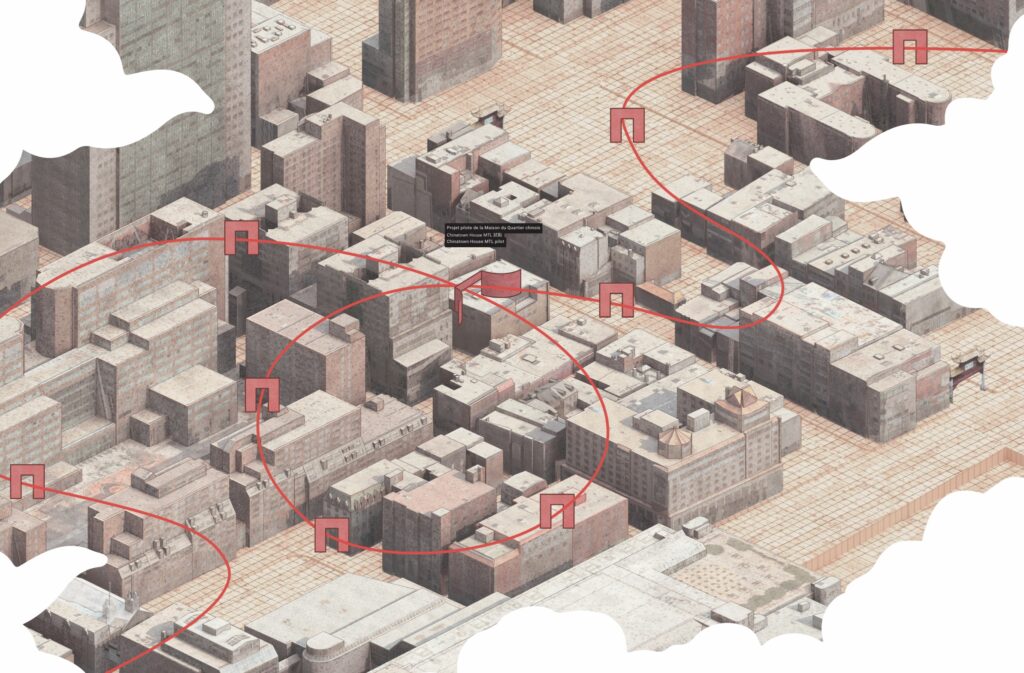Museum of Parco Celio
Weaving new museums on a historic Roman site
Years | 2018
Location | Rome

From Antiquity to the Middle Ages to the Renaissance to Mussolini… The richness of Rome resides not in a single period but in its breathtaking sequence of successive incarnations. Each incarnation of Rome carries with it a new urban paradigm that grafts onto the existing city. The negotiations between urban paradigms are part of Rome’s eternal battle between the ideal and the real, the platonic and the circumstantial, the past and the future. Rather than associating ourselves with one paradigm, the Museo del Parco Celio plays with the relationship between periods of histories, clashing and contorting pieces of the past and the present to generate new narratives.
The new Museo del Parco Celio neighbours great Roman monuments like the Colosseum, the Palatine Hill and the Circus Maximus. Unlike the existing museums at each monument, the new museum will weave together the narratives of different Roman monuments, providing visitors with a more congruous understanding of Roman history.
The first part of our proposal are three lines drawn towards each monument. A ditch connects the Colosseum to San Gregorio al Celio; a ramp connects the entry gates of the Palatine Hill to a new Tower; an inhabited Wall connects the existing villa on the site to a view over the Circus Maximus.
The rest of the buildings are underground. Unlike the axis, an icon of point and focus, they are laid out on a grid – no longer concerned with centre but rather with surface. Its interaction with the axis will be expressed through collisions of form and spaces.
Typologies
Museum
Status
Concept
Team
T.K. Justin Ng
Tristan Sito
The search for an architecture that reflects the zeitgeist has historically resulted in periods of architecture, styles. But since the Gutenberg Press and even more so the internet, buildings are no longer the primary means of mass communication and architects, as much as we would like to believe otherwise, are no longer the vanguards of culture. While some see this as the death of architecture, where our industry has no choice but to step towards a more utilitarian objective, our profession’s liberation from its archaic duties enable a new architectural response to culture and history.
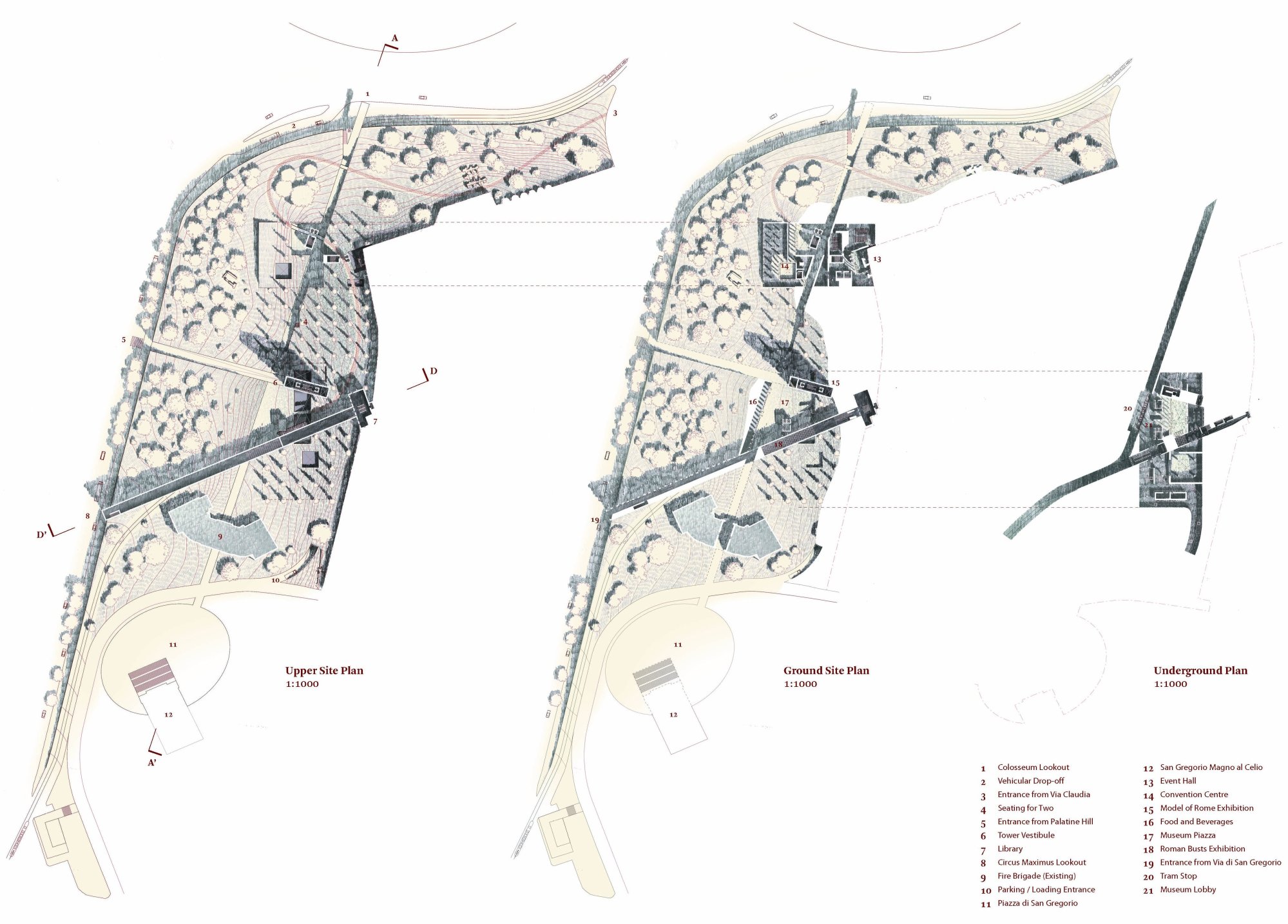
The Tower
The axis extending from the entrance of the Palatine Hill extends skyward into a tower. Identical in height to the Colosseum, the tower marks our intervention on Rome’s skyline while offering visitors an inspection of the city.
The model of Rome hangs on the southern wall of the tower while the northern wall is punctured by deep windows reminiscent of a climb up medival campaniles. From the tower, the city of Rome looks no larger than the model. Visitors circulate in a separate steel structure inbetween the model and the windows.

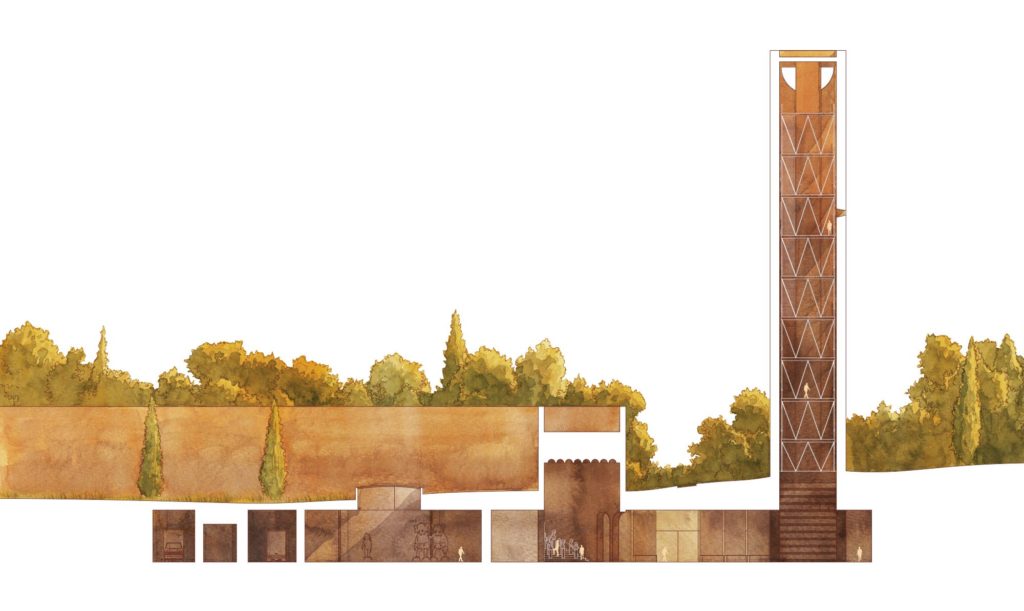

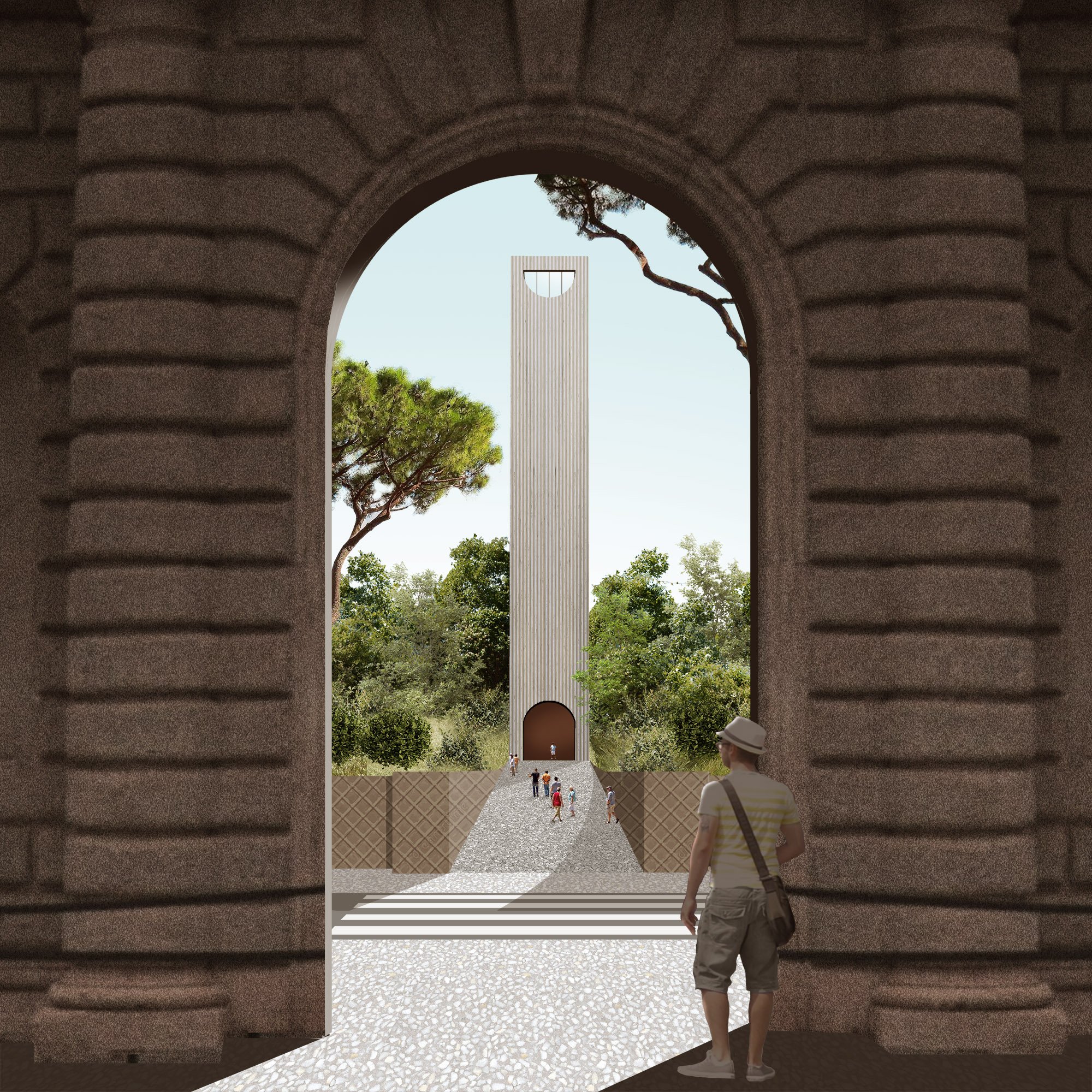
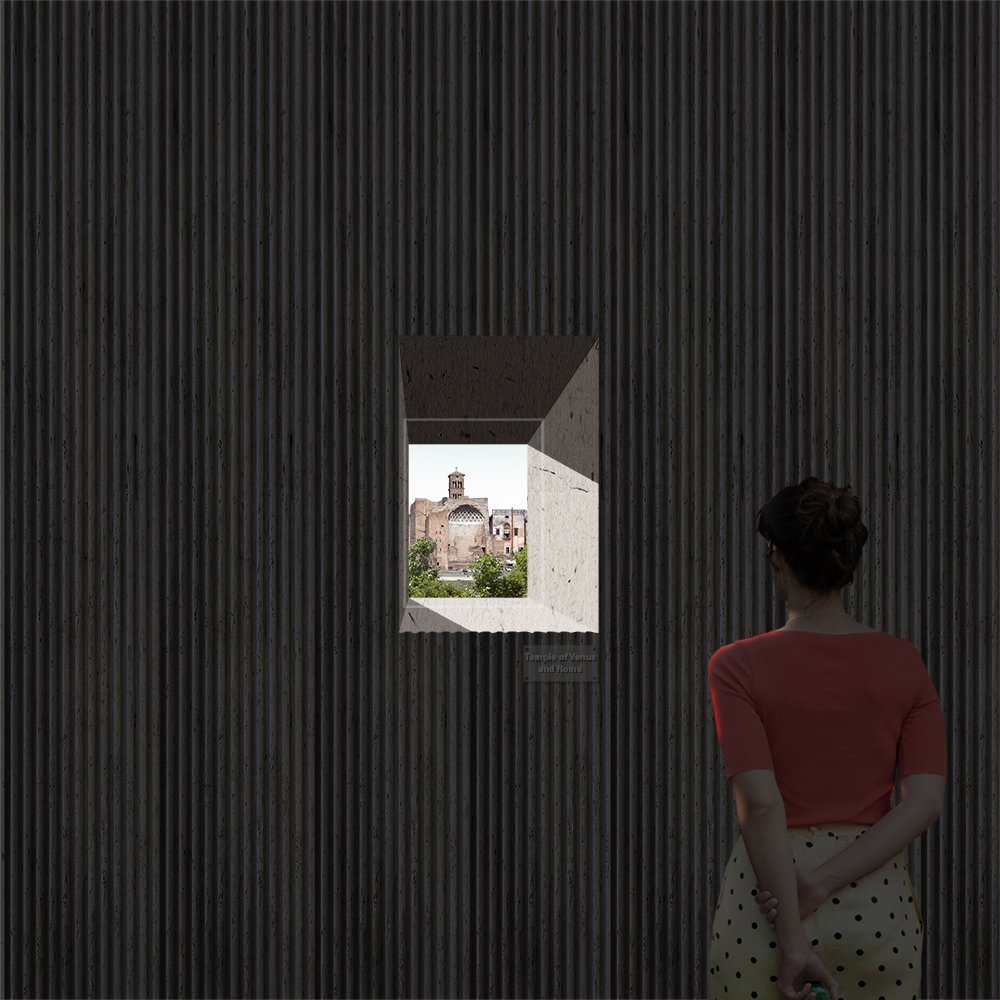
The Wall
The axis oriented towards the Circus Maximus is a wall that begins at the base of the existing villa, on the eastern edge of the site, and rises to match the height of the aqueduct, west of the site. Six metres wide, the Wall is an inhabited structure housing both public and museum circulation.
From Via di San Gregorio, a public arcade lead pedestrians to the piazza at the centre of our project, where they may continue along the other axis or enter the museum. The rest of the Wall is accessible from the subterranean museum lobby after the purchase of a ticket.
The staircase negotiating the difference in level between museum and the lookout over the Circus Maximus requires physical exersion, making it a prolonged and dignified journey. It is here that one hundred and nine Roman busts are placed on display.
The exterior of the Tower and the Wall is corduroy concrete – the result of clashing a steel mullet on newly casted fluted concrete. The subterranean portions are left as polished fluted concrete.
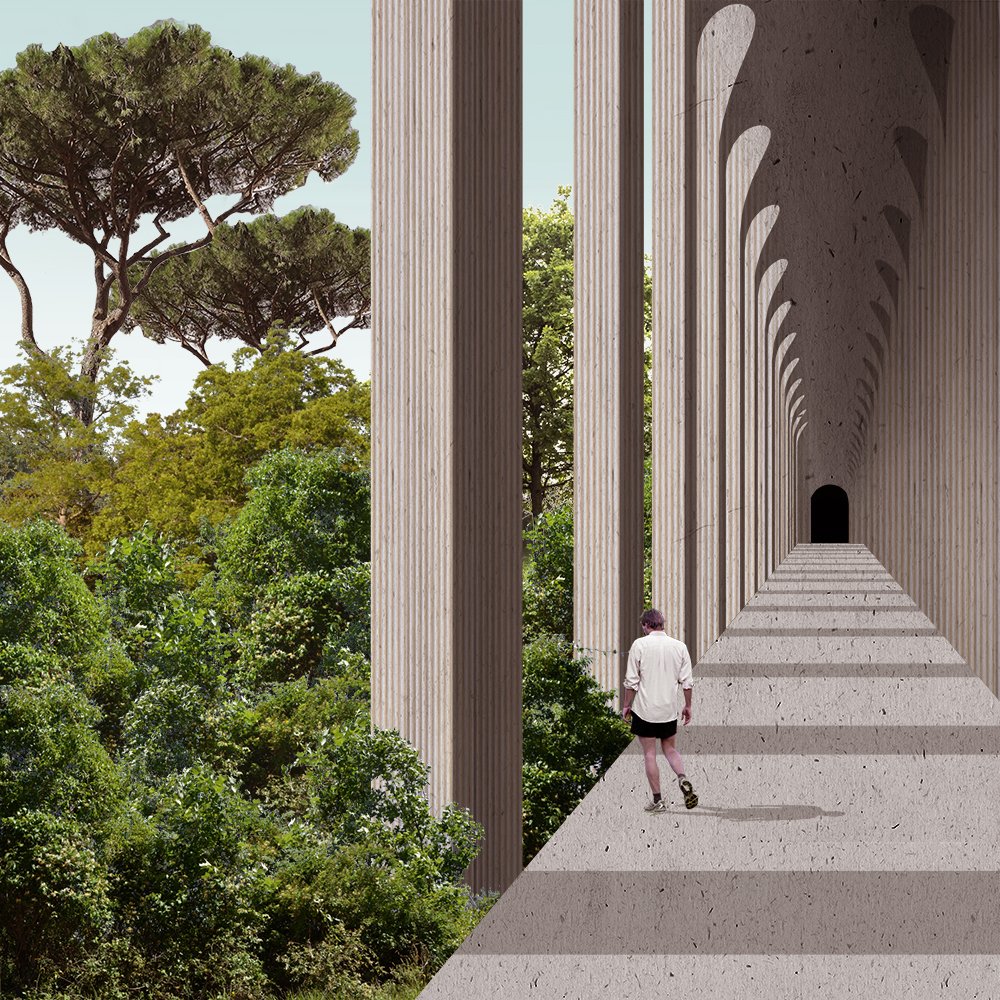
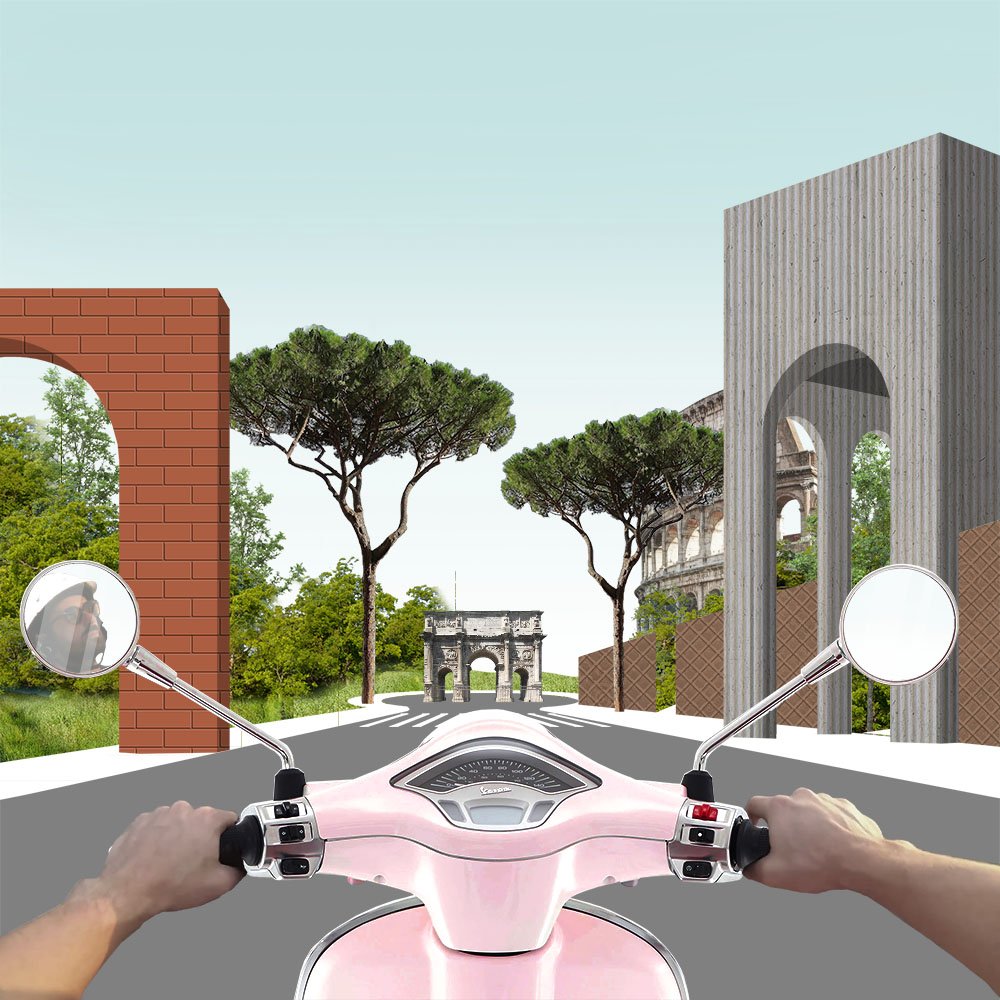
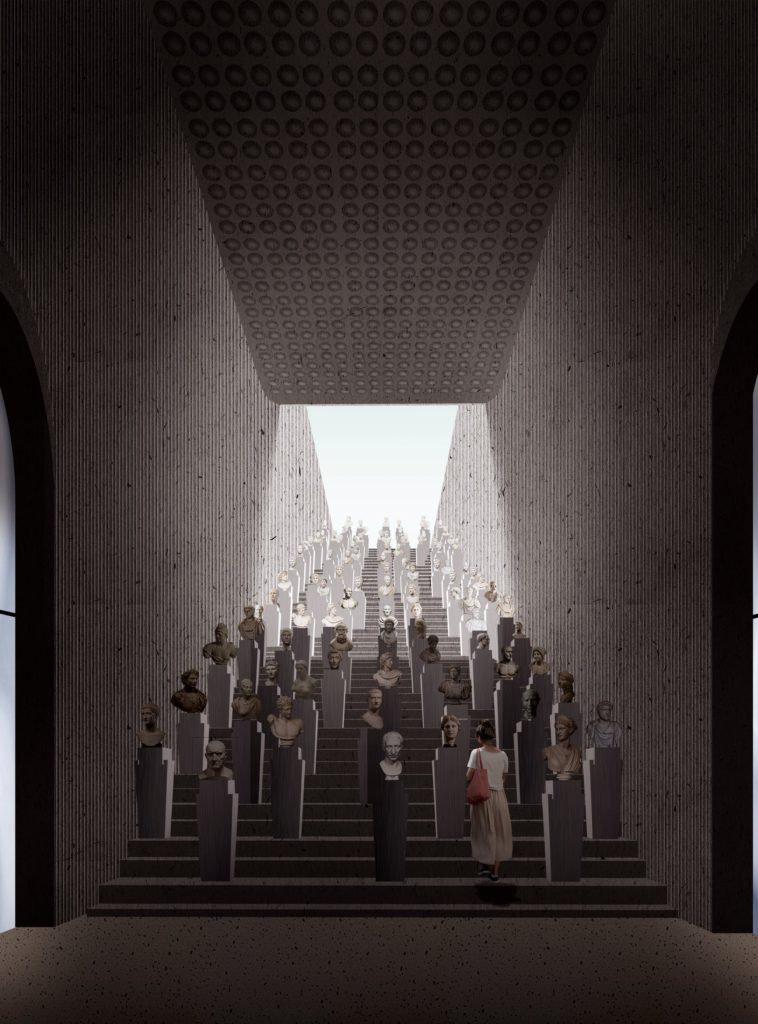
Subterranean Museum
Surrounded by the Wall, the Tower and a row of restaurants, a piazza is located at the heart of the project where the project is most convivial. A sunken courtyard beside the piazza reveals the museum lobby tucked beneath the piazza. Stairs and elevators bring museum-goers into the courtyard. Trams also stop beside the museum lobby during opening hours.
This subterranean building is a retroactive intervention that tries to make sense out of the intersection of the three axes. Not only does it connect to the Tower and the Wall, smaller architectural episodes are arranged to induce the necessary intensifications and relaxations.
The rectangular outline that defines the edge of the excavation will be retained with a secant piling wall – left untreated. A waffle ceiling structure will express the grid upon which the building is design – only to be broken by the Tower and the Wall.
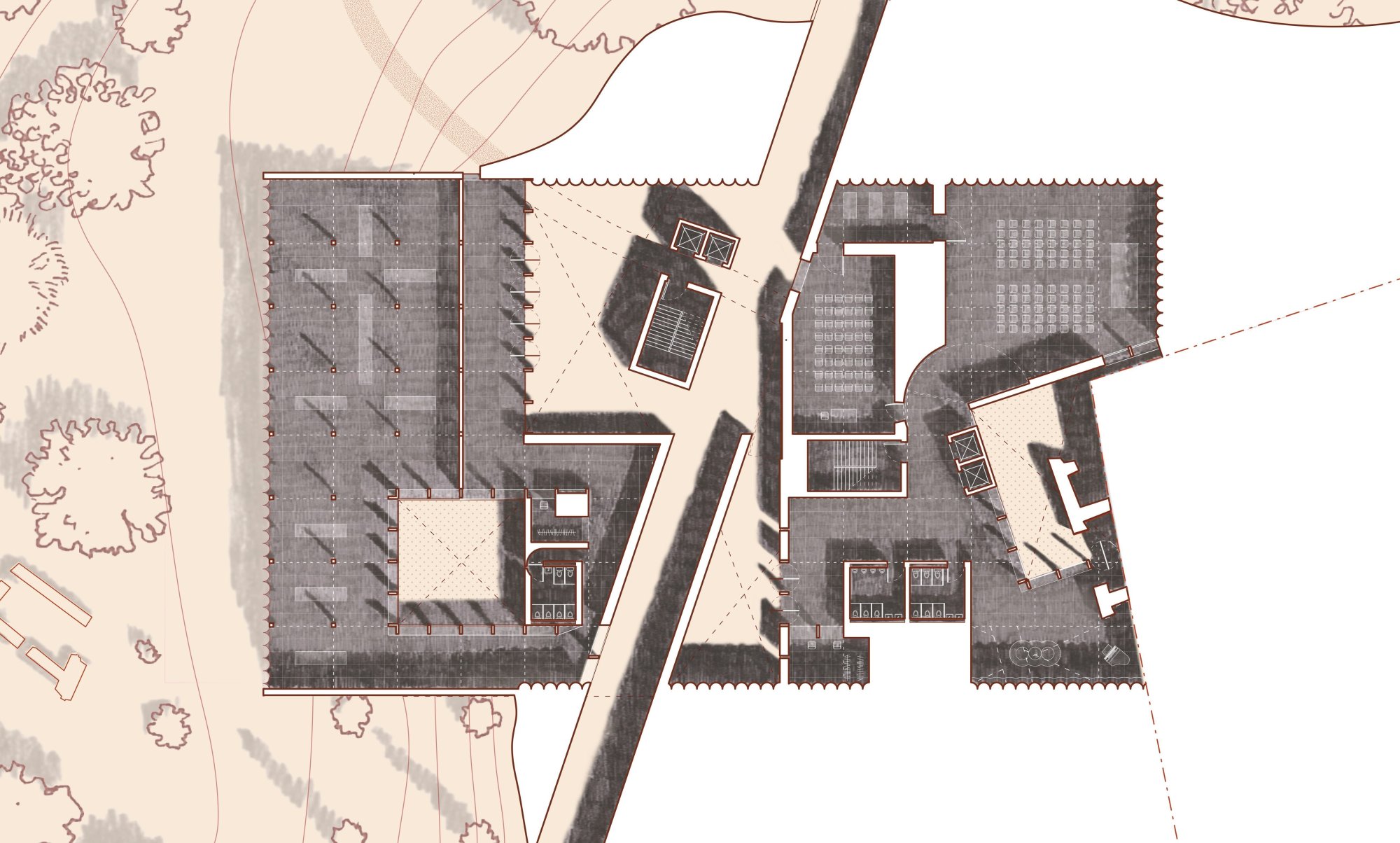


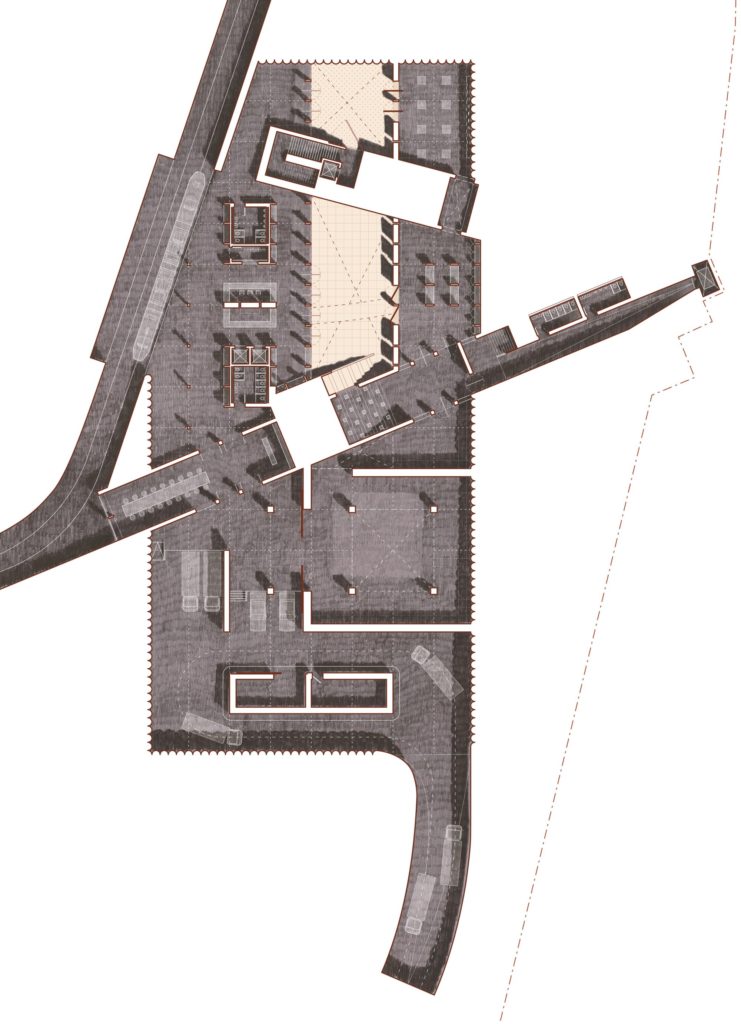
Center for Italian Culture
Open only for events, the Centre for Italian Culture is withdrawn from the museum, accessible only from one axis. Without the Tower and the Wall intersecting the building, smaller – perhaps pretensive – architectural interventions are implemented to hint at the city’s long history.
Basic elements of architecture are turned into motifs that are then reinterpreted or even inverted. The circle inscribed by the swinging of a door is given form and exaggerated in plan – this occurs in two instances, one small, one extra large. The secant pile walls that line the retaining walls become a corrugated glass facade facing the lush landscape.
The eastern edge of the building intersects the podium of the Temple of Claudius, where the ruin is treated in two different ways. One portion is left exposed to nature, allowing it to continue its pathos of decay. The other, smaller portion is protected by the building, forzen in time and forced to remain in limbo.

Other Projects

